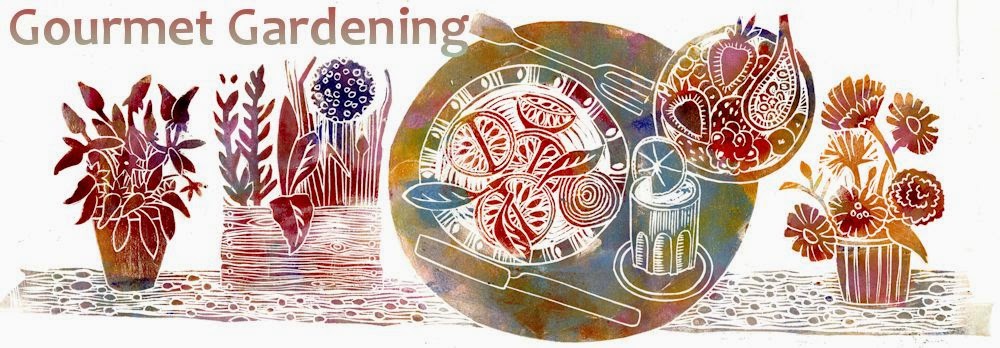I inherited a couple of blackcurrant bushes when I took on my allotment. They were there already, flourishing and providing heavy crops of fruit each year without fuss. This means I never went through the process of researching varieties, which types might give the best fruits, or be the most pest-resistant. I just left them well alone and enjoyed the resulting blackcurrants, fresh from the bush, made into sorbet, and best of all, turned into crème de cassis (above).
Inside each of the enlarged buds is a colony of big bud mites, microscopic creatures which feed on the sap in the developing leaves. Big bud does what it says on the tin: the winter buds are round and bigger than the unaffected ones, which are tight and oval. To the uninitiated (OK, maybe just me), the affected buds can actually look healthier.
 The big bud mite won't kill off your blackcurrant bushes, but the swollen buds won't open and so will stunt the growth of the plant. Big bud mites are also responsible for spreading reversion virus in blackcurrants which will severely reduce the amount of fruit the bush produces. The mites can also inhabit red and whitecurrants and gooseberries, though without causing the characteristic 'big bud' for which they're named.
The big bud mite won't kill off your blackcurrant bushes, but the swollen buds won't open and so will stunt the growth of the plant. Big bud mites are also responsible for spreading reversion virus in blackcurrants which will severely reduce the amount of fruit the bush produces. The mites can also inhabit red and whitecurrants and gooseberries, though without causing the characteristic 'big bud' for which they're named.Once it has taken hold, big bud can be difficult to eradicate. In summer, they will emerge infest new buds. They can be blown on to your bushes by the wind, but they are only really noticeable in the winter when you can clearly see the enlarged buds. There aren't any chemical sprays available to the domestic gardener which will be effective, and anyway, this seems like an overreaction; it's not as if the plants are in imminent danger of collapse. In the longer term you may have to replant your blackcurrants if/when they develop full-blown reversion virus.
In the meantime, it's not too onerous to check the plants a few times over the winter, removing the big buds by hand, and can be done at the same time as pruning. Just don't drop the big buds and lose them in the undergrowth. One is advised to burn rather than composting as well, to ensure that you don't end up breeding more bug bud mite colonies.
Further reading
RHS pest and disease pages: https://www.rhs.org.uk/Advice/Profile?PID=452
Big bud and reversion disease in Which? magazine: http://www.which.co.uk/documents/pdf/blackcurrant-reversion-151472.pdf










